![]() PWOnlyIAS
PWOnlyIAS
![]() February 29, 2024 07:38
February 29, 2024 07:38
![]() 885
885
![]() 0
0
Jahangir, the fourth Mughal emperor, known for his patronage of the arts, religious tolerance, and economic initiatives. Jahangir's relationships with European traders.
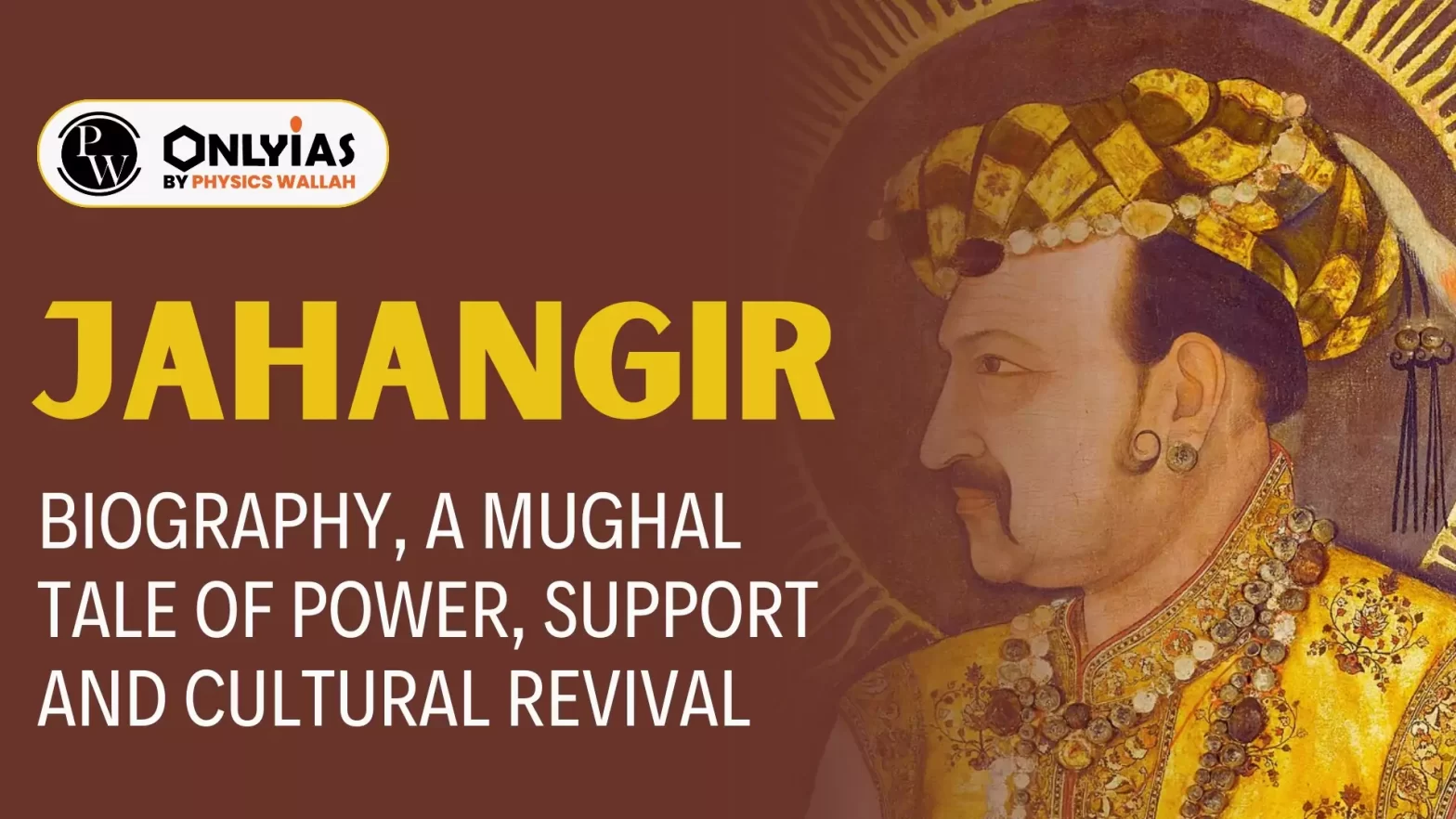
Jahangir was the fourth emperor in the Mughal Dynasty established by Babar. Jahangir ruled from 1605 to 1627. He was the son of Akbar and is famous for his patronage of the arts, his religious tolerance, and his love of gardens.
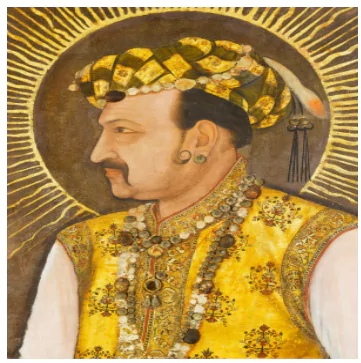
Portrait of Jahangir
| Full Name | Nur-ud-din Mohammad Salim, Prince Salim |
| Born | 30 August 1569 |
| Place of Birth | Fatehpur Sikri, AgraFatehp |
| Jahangir Father Name | Akbar, Jahangir was his third and only surviving son |
| Jahangir Mother Name | Mariam-uz-Zamani (Jodha Bai) (Harka Bai) |
| Jahangir Spouses | Shah Begum (Mann Bai), Yash Deiji, Malika Shikar Begum, Khas Mahal, Saliha Banu Begum, Sahib-i-Jamal Begum, Malika Jahan Begum, Zohra Begum, Karam Deiji, Kanwal Rani, Nur un-Nisa Begum, Mehr-un-Nisa (Nur Jahan) |
| Jahangir Children | Khusrau Mirza, Parviz Mirza , Shah Jahan, Jahandar Mirza, Shahryar Mirza |
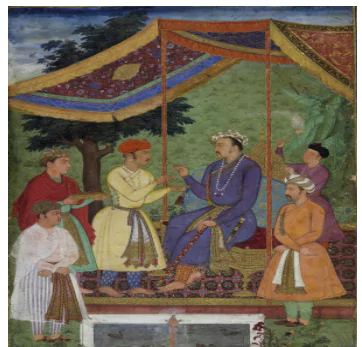
Jahangir with his sons
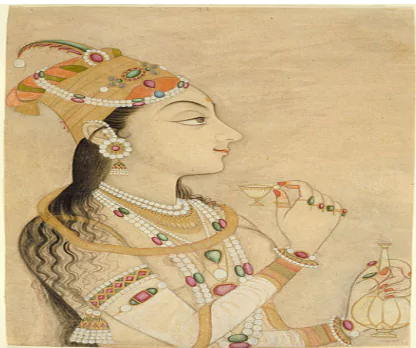
Nur Jahan Wife of Jahangir
Jahangir also known as Prince Salim born on 31 August 1569 in Fatehpur Sikri, Agra. He was the son of Akbar with his wife Jodha Bai.
During his training days Jahngir got eager for power and rebelled in 1599 while Akbar was away in Deccan but they later reconciled. In 1605 Akbar died and Jahangir succeeded to the throne.
Reign of Jahangir was not as impressive as his father but there were several military campaigns of Jhangir to consolidate his power and expand the Mughal Empire’s reach.
| Year | Conquest | Description |
| 1615 | Conquest of Mewar |
|
| 1617 | Conquest of Deccan |
|
| 1622 | Conquest of Kandhar |
|
Jahangir has taken various crucial steps to improve his administration and continue the policy of his father. Let us look at some of his changes in administration.
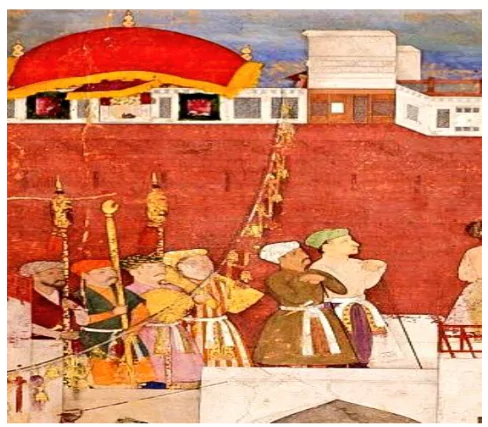
Portrait of Jahangir’s Chain of Justice
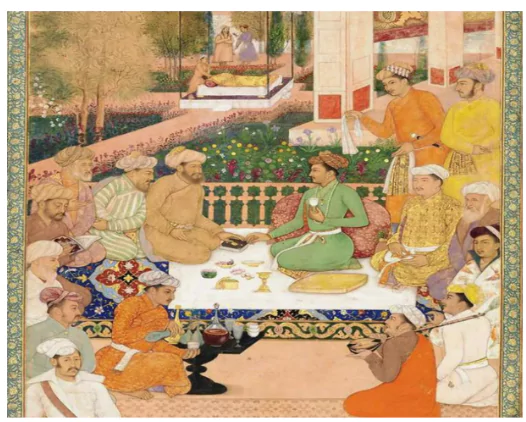
Portrait of Jahangir Delivering Justice
There was speculation that after Akbar’s death Sharia Law would be restored but Jahangir extended Akbar’s policy of tolerance.
Jahangir knew the importance of trade in maintaining the economy so he focused on infrastructure development and all trade related policies.
Few years before the accession of thrones by Jhangir Europeans were already present in India. The Portuguese, the Dutch and the English traders had already established their business in India.
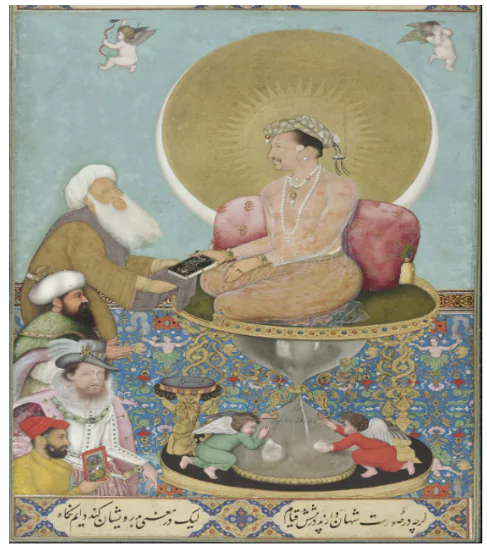
European trader can be seen with Jahangir
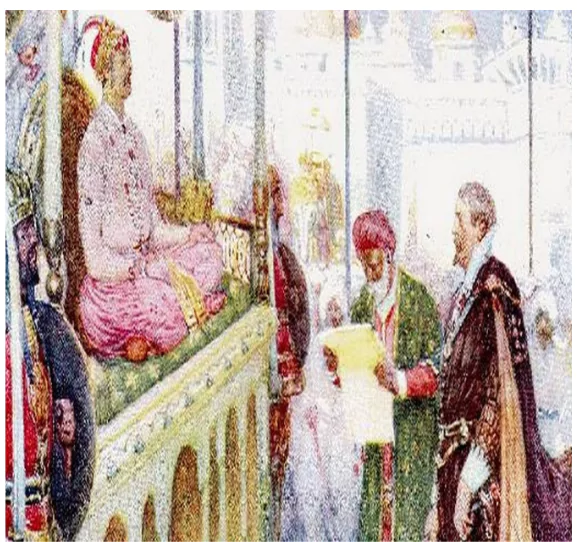
Jahangir with Sir Thomas Roe
Jahangir’s reign witnessed a vibrant period of cultural development. He patronized the arts and paintings. During his reign several architecture and gardens were built; here’s a glimpse into how he fostered cultural enrichment.
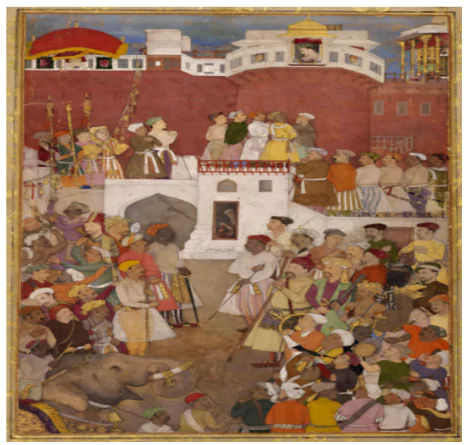
Painting by Abul Hasan depicting Jahangir
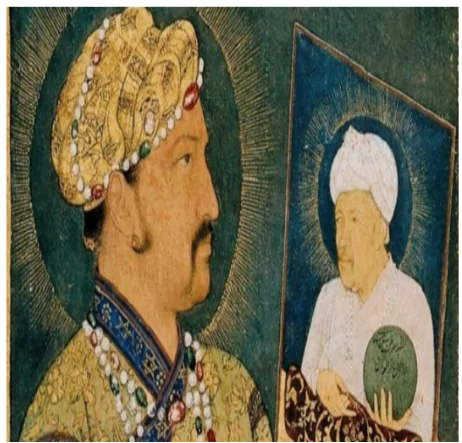
Jahangir holding the portrait of Shah Jahan
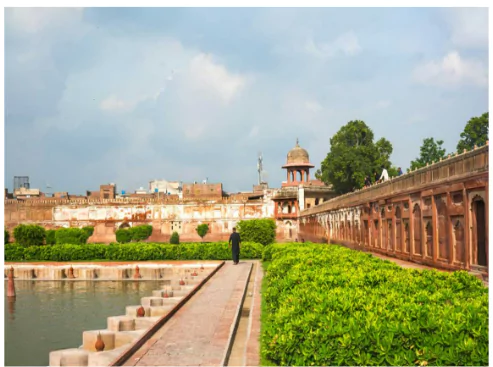
Shalimar Garden in Lahore
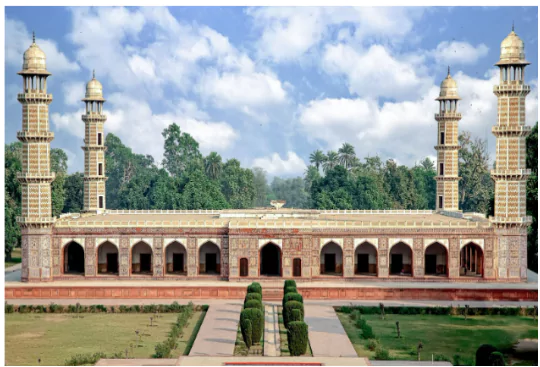
Tomb of Jahangir in Lahore
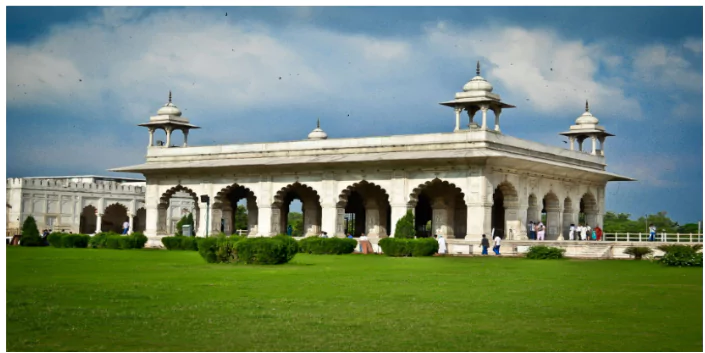
Diwan-e-Khas in Agra Fort
| Must Read | |
| NCERT Notes For UPSC | UPSC Daily Current Affairs |
| UPSC Blogs | UPSC Daily Editorials |
| Daily Current Affairs Quiz | Daily Main Answer Writing |
| UPSC Mains Previous Year Papers | UPSC Test Series 2024 |
<div class="new-fform">
</div>

Latest Comments